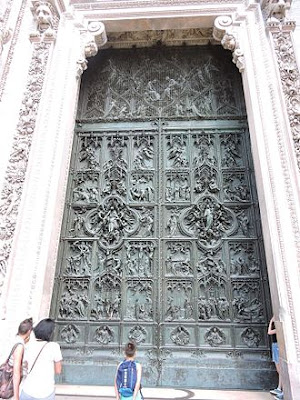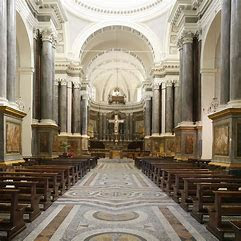Mozambique, Zambia, and Zimbabwe
This blog will discuss the Catholic Church in Mozambique, Zambia, and Zimbabwe.
Mozambique
Arab traders frequently traded in the ports of Mozambique between 1000 and 1500. The Portuguese took over the coastal trade in the decades after 1500 and established colonies. Mozambique gained independence in 1975.
About a third of Mozambique’s 31 million people are non-Catholic Christians. Catholics make up 28 percent of the population, Muslims 19 percent, and those with no religion 14 percent. Portuguese Jesuits and Dominicans introduced the Faith in the 16th Century, but relations between the Church and the Portuguese government waxed and waned over the years which impacted evangelization efforts. There are three Catholic ecclesiastic provinces—Beira, Maputo, and Nampula.
Province of Maputo
The province consists of the civil provinces of Maputo, Maputo City, Gaza, and Inhambane, in southern Mozambique. The Apostolic Administration of Mozambique was created in 1612 and became a territorial prelature in 1783. This became a metropolitan archdiocese in 1940 and it acquired its current name in 1976.
The Cathedral of Our Lady of the Immaculate Conception in Maputo was built between 1936 and 1944. It was designed by a Portuguese engineer inspired by the churches of Europe. Because of financial difficulties, the cathedral was built with concrete and cement.
The first picture is from Alamy, the next two are from local sources, and the last two are from Wikipedia.
The Province has two suffragan dioceses.
- The Diocese of Inhambane was established in 1962.
- The Diocese of Xai-Xai was established in 1970.
Province of Beira
The province consists of the civil provinces of Sofala, Manica, Tete, and part of Zambezia in Central Mozambique. The Diocese of Beira was established in 1940 and became a metropolitan archdiocese in 1984.
Our Lady of the Rosary Cathedral in Beira was built between 1900 and 1925. The Gothic Revival building was heavily damage by a cyclone in 2019.
Pictures are from Pinterest and Wikipedia.
The Province has three suffragan dioceses.
- The Diocese of Quelimane was established in 1954.
- The Diocese of Tete was established in 1962.
- The Diocese of Chimoio was established in 1990.
Province of Nampula
The province consists of the civil provinces of Nampula, Cabo Delgado, Niassa, and part of Zambezia in northern Mozambique. The Diocese of Nampula was created in 1940 and was promoted to a metropolitan archdiocese in 1984.
The Cathedral of Our Lady of Fatima in Nampula was built in a traditional style between 1942 and 1956. It has two towers.
The first two pictures are from Flickr and the last is from Wikipedia.
The Province has four suffragan dioceses.
- The Diocese of Pemba was established in 1957.
- The Diocese of Lichinga was established in 1963.
- The Diocese of Nacala was established in 1991.
- The Diocese of Gurue was established in 1993.
Zambia
In the 1880s, the British began securing mineral and other economic concessions from various local leaders and the territory that is now Zambia eventually came under the control of the British South Africa Company and was incorporated as the protectorate of Northern Rhodesia in 1911. Administrative control was taken over by the British Government in 1924 and advances in mining spurred development and immigration over the next two decades. Zambia gained independence in 1964.
Portuguese Dominicans came to what is now Zambia as early as the 16th Century, but serious evangelization did not begin until the late 1800s with the Jesuits in South, and the White Fathers in the North and East. Italian Franciscans set up missions in the West in 1931. Today, almost all of Zambia’s 19 million people are Christian. Catholics make about a quarter of the total. There are two Catholic ecclesiastic provinces—Kasama and Lusaka.
Province of Lusaka
The province consists of the southwestern two-thirds of Zambia. The Archdiocese of Lusaka was established as the Apostolic Prefecture of Broken Hill in 1927, became the Apostolic Vicariate of Lusaka in 1950, and was promoted to a metropolitan archdiocese in 1959.
Child Jesus Cathedral in Lusaka was built in the 1990s and officially dedicated in 2006.
The first picture is from Wikipedia and the other two are from the archdiocesan website.
The Province has seven suffragan dioceses.
- The Diocese of Livingstone was established as an apostolic prefecture in 1936, became an apostolic vicariate in 1950, and a diocese in 1959.
- The Diocese of Chipata was established as the Apostolic Prefecture of Fort Jameson in 1937, became an apostolic vicariate in 1953, ad diocese in 1959, and acquired its current name in 1968.
- The Diocese of Ndola was established as an apostolic prefecture in 1938, an apostolic vicariate in 1949, and became a diocese in 1959.
- The Diocese of Monze was established in 1962.
- The Diocese of Solwezi was established as an apostolic prefecture in 1959 and became a diocese in 1976.
- The Diocese of Mongu was established in 1997.
- The Diocese of Kabwe was established in 2011.
Province of Kasama
The province consists of the northeastern one-third of Zambia. The Metropolitan Archdiocese of Kasama began as an apostolic vicariate in 1913, became a diocese in 1959, and a metropolitan archdiocese in 1967.
St. John the Apostle Cathedral in Kasama was built in the 1960s.
The first picture is from the archdiocesan website and the second from Wikipedia.
The Province has two suffragan dioceses.
- The Diocese of Mansa was established as an apostolic prefecture in 1952 and became a diocese in 1961. It acquired its current name in 1967.
- The Diocese of Mpika was established as a Mission sui juris in 1933, became an apostolic vicariate in 1937, and a diocese in 1959.
Zimbabwe
The Kingdom of Zimbabwe existed during the 13th to the 15th Centuries, but the British South Africa Company took control of the area in the 1880s. The southern portion of the territory became the British colony of Southern Rhodesia in 1923. A white government came into power in 1961 and declared independence from the British in 1965. The British did not recognize this government, but it was not until 1979 that free elections were held. Robert Mugabe ruled the country from 1980 until 2017.
Portuguese missionaries came to what is now Zimbabwe in 1560 but were ultimately not successful with evangelization. Successful Catholic missionary activity began with the arrival of the Jesuits in the late 19th Century. Today, most of the 15 million people are Christian, although 11 percent claim no religion. Catholics make up over 10 percent of the population. There are two Catholic ecclesiastic provinces—Bulawayo and Harare.
Province of Harare
The province consists of the northeastern half of Zimbabwe. The Archdiocese of Harare was established the Mission sui juris of Zambese in 1879. This became an apostolic prefecture in 1915, an apostolic vicariate in 1931, and a metropolitan archdiocese in 1955. The name was changed from Salisbury to Harare in 1982.
The Cathedral of the Sacred Heart of Jesus in Harare was built between 1924 and 1925 to replace a Jesuit chapel. Jesuits served the Gothic Revival Cathedral until 2008.
The first picture is from Wikipedia and the second is from Pinterest.
The Province has three suffragan dioceses.
- The Diocese of Mutare was established as an apostolic prefecture in 1953 and became a diocese in 1957.
- The Diocese of Chinhoyi was established as an apostolic prefecture in 1973 and became a diocese in 1985.
- The Diocese of Gokwe was established in 1991.
Province of Bulawayo
The province consists of the southwestern half of Zimbabwe. The Metropolitan Archdiocese of Bulawayo began as a mission sui juris in 1931. It became an apostolic prefecture in 1932, an apostolic vicariate in 1937, and a diocese in 1955. It was promoted to a metropolitan archdiocese in 1994.
The Cathedral of the Immaculate Conception in Bulawayo was built between 1903 and 1904 to replace a small chapel built by the Jesuits. The Gothic cathedral was designated a minor basilica by Pope Francis in 2013.
The first picture is from the archdiocesan website, the second is from Wikipedia, and the last from a local website.
The Province has three suffragan dioceses.
- The Diocese of Gweru was established as an apostolic prefecture in 1946, became an apostolic vicariate in 1950, and became a diocese in 1955.
- The Diocese of Hwange was established as an apostolic prefecture in 1953 and became a diocese in 1963.
- The Diocese of Masvingo was established in 1999.
Definitions
The Catholic Church is mostly divided into ecclesiastical provinces—a province consists of a metropolitan archdiocese and one or more dioceses. The province and the archdiocese are led by an archbishop. Each of the dioceses is called a suffragan diocese and is led by a bishop. Archbishops have some responsibilities for the province, but all bishops answer directly to the Pope. There are also jurisdictions below the level of a diocese. These include apostolic vicariates, apostolic prefectures, apostolic administrations, territorial prelatures, and missions sui juris.
A basilica is an honorary title bestowed on a church by the Pope because of the church’s antiquity, dignity, historical importance, or significance as a center of worship. Some cathedrals are also basilicas. Each basilica has a ceremonial umbrella in the papal colors of white and yellow and a ceremonial bell. Both of these are symbolic of the Pope’s special relationship to the basilica.

























































































